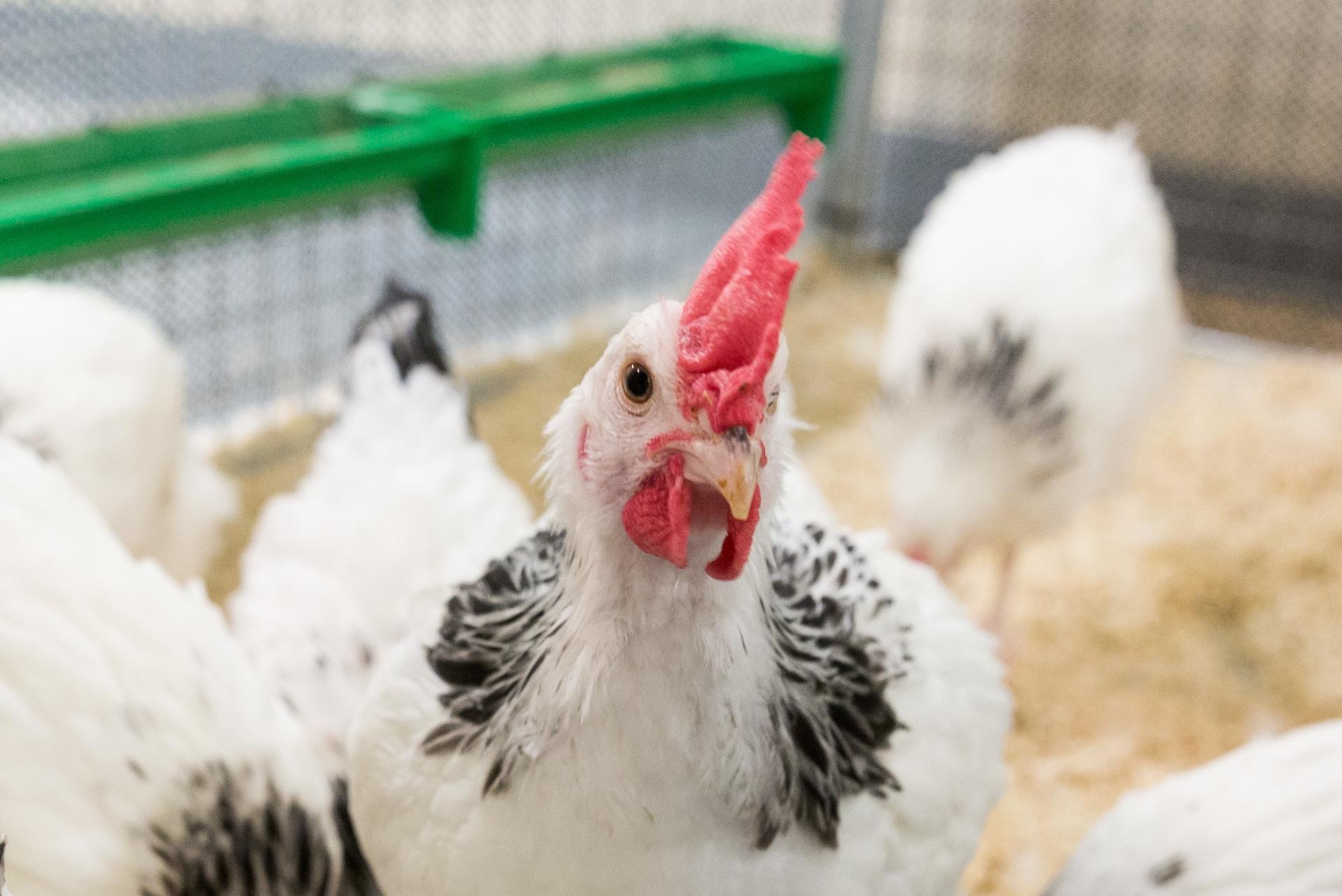Work carried out by scientists at The Pirbright Institute has revealed that differences in virulence between strains of infectious bursal disease virus (IBDV) may be partly down to changes in a viral protein called VP4. Their findings could help us to understand why very virulent (vv) strains cause high mortality rates in some commercial poultry flocks and could also be used to inform vaccine research and surveillance efforts.
IBDV is among the top five infectious problems of chickens and poses a continuous threat to the poultry industry though economic losses and welfare concerns. The virus infects cells of the immune system, meaning surviving birds are often more susceptible to secondary infections and less responsive to vaccination programmes. The vv strains of IBDV emerged in the 1980s and Pirbright researchers were the first to sequence their genome. These strains were more deadly than classical strains, however the reason for this is still poorly understood.
In their study, published in Frontiers in Cellular and Infection Microbiology, the team compared a vv strain of IBDV to a less virulent classical field strain and found that the vv IBDV inhibited the antiviral response of infected cells more than the classical strain. The researchers found that this was partly due to genetic variations in the VP4 protein, suggesting that the VP4 protein might contribute to IBDV virulence.
Dr Andrew Broadbent, Head of the Birnavirus Group at Pirbright said: “We saw higher levels of vv IBDV replication in cells than the classical strain, so it is possible that by preventing this antiviral response, the vv strains are able to replicate more efficiently, which gives them an advantage over the classical strains and encourages their spread and evolution”.
Further exploration of the VP4 protein could prove useful for IBDV vaccine development, as the VP4 gene from less virulent strains could be inserted into vv strains to weaken them for use in vaccines. The new information from this study could also be used to improve IBDV surveillance efforts and control strategies. For example, understanding the genetic signatures that increase the virulence of IBDV strains could be used to better inform national surveillance efforts in order to assess the potential threat of an emerging strain as early as possible.
This study was funded by the Biotechnology and Biological Sciences Research Council (BBSRC), part of UK Research and Innovation (UKRI).
